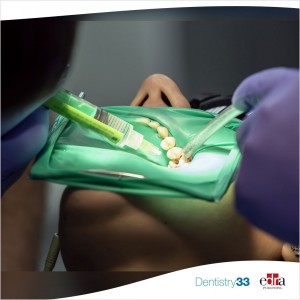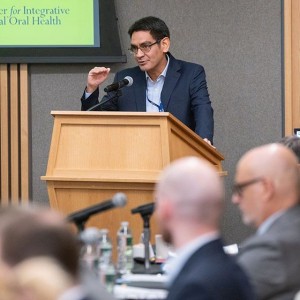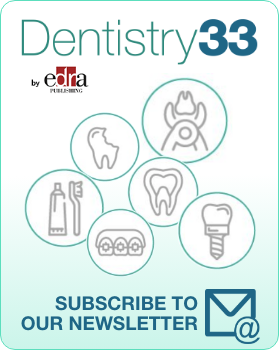
Varnish based on arginine-fluoride and its anti-cariogenic effect
Lara Figini
Dental caries is a chronic biofilm-mediated disease and is determined by biological, behavioral, psychosocial and environmental factors. Being multifactorial in origin, dental caries has a widespread impact affecting approximately 40% of the world's population.
Strategies aimed at controlling the disease are mainly based on prevention. Fluorides (F) have long remained the main strategic intervention for caries control. The topical action of fluorine improves remineralization by facilitating the deposition of calcium (Ca2+) and phosphorus (PO43-), inhibiting demineralization and stimulating the subsequent formation of fluorapatite crystals.
However, several literature studies have highlighted a limited prolonged effect of fluoride on microbial biofilms and the development of resistance to its antimicrobial effect by cariogenic pathogens such as Streptococcus mutans. The consequence of these F limitations significantly affects patients at high caries risk who maintain cariogenic biofilms dominated by acidophilic and acidophilic bacteria.
Arginine (Arg) is a naturally occurring semi-essential amino acid, available in micromolar concentrations in saliva and plaque biofilm. Saliva and plaque metabolized by the bacterial arginolytic system arginine deaminase (ADS) go to the ammonia (NH3) pathway which helps to increase intraoral pH.
Increased ADS activity is associated with patients at low caries risk and vice versa. With increased ADS activity there is a predominance of arginolytic bacteria (Streptococcus sanguinis, Streptococcus parasanguinis and Streptococcus gordonii) in the biofilm with mild/rare acidification, thus preventing the development of cariogenic biofilms.
The amino acid L-arginine (L-Arg) has therefore been incorporated into fluoridated toothpastes, and the latter appear to provide a significantly greater protective effect against caries than toothpastes with fluoride alone.
Could this effect also apply to paints?
Materials and methods
In an experimental study, published in the March 2022 issue of the Journal of Dentistry, the authors examined the modulatory effect of arginine (Arg)-fluoride (F) varnish on a multispecies biofilm.
Experimental varnishes were prepared by incorporating L-Arg (1%, 2% and 4%) into 5% NaF sodium fluoride. The control group consisted of 5% NaF varnish alone.
The following test groups were studied:
- Group 1, 1% Arg in NaF paint (1% Arg-NaF)
- Group 2, 2% Arg in NaF paint (2% Arg-NaF)
- Group 3, 4% Arg in NaF paint (4% Arg-NaF)
- Group 4, NaF varnish (NaF) containing excipients such as ethanol, white beeswax, shellac, rosin BP, mastic, saccharin sodium, flavorings
- Group 5, no treatment.
Multispecies biofilms including Streptococcus mutans, Streptococcus sanguinis and Streptococcus gordonii were grown on hydroxyapatite (HA) discs and treated with Arg and F according to the respective concentrations of the experimental and control groups.
Biofilm thickness and live/dead bacterial counts were analyzed using images obtained by confocal microscopy, while the polysaccharide, protein and biofilm composition of extracellular DNA (eDNA) was evaluated spectrophotometrically.
The bacterial composition in the biofilms was analyzed using real-time quantitative polymerase chain reaction (qPCR). Relative gene expression (RGE) was determined for gtfB, SMU.150, nlmD, arcA and sagP.
Results
Both the 2% and 4% Arg-NaF groups reduced biofilm thickness, with the 4% Arg-NaF group showing a significantly higher proportion of dead bacteria, followed by the 1% and 2% Arg- NaF.
All Arg-NaF groups significantly reduced the carbohydrate content of the biofilm, while biofilms treated with 4% Arg-NaF showed higher concentration of eDNA and protein than the control NaF group.
The expression of gtfB, SMU.150 and nlmD was markedly reduced in biofilms treated with 4% Arg-NaF, whereas 2% Arg-NaF enhanced arcA expression. Both 2% Arg-NaF and 4% Arg-NaF significantly increased sagP expression.
Conclusions
From the data of this study, researchers concluded that incorporating L-arginine improves the modulating effect of the biofilm compared to NaF paint alone thanks to the release of Arg and f.
Clinical significance
The study results indicate that Arg-F varnish (at 2%/4% w/v. Arg) has the potential to modulate cariogenic biofilms in high-risk individuals.
For more information: "Biofilm modulatory response of arginine-fluoride varnish on multi-species biofilm."
 Related articles
Related articles
Oral pathology 28 September 2023
In a new paper published by iScience, antibodies extracted from 800-year-old medieval human teeth were found to be stable and still able to recognize viral proteins.
Oral Hygiene & Prevention 23 September 2023
UNC, U Penn community-based study offers dental disease insights
By UNC Adams School of Dentistry News
Their findings, reported in Nature Communications, showed that dental caries in childhood are characterized by an imbalance in the oral microbiome, and that previously unrecognized bacterial...
Despite its reputation as the most widely used restorative dental material currently, resin-based materials have acknowledged shortcomings.
This investigation compared the efficacy of oscillating-rotating, sonic and manual toothbrushes in reducing gingivitis and plaque in randomized controlled trials with up to six months’ follow-up.
Endodontics 11 July 2023
This study compared disinfection and shaping after root canal preparation with either XP-endo Shaper or TruNatomy instrument systems, supplemented by ultrasonic activation of sodium hypochlorite...
 Read more
Read more
Editorials 22 April 2024
If there were an indicator for change in music, this would be off the charts if it wanted to measure how many and what changes Miles Davis has made since, at eighteen, he was enlisted, almost by...
Editorials 22 April 2024
Center for Integrative Global Oral Health Brings Together Global Leaders to Advance Health Advocacy
Penn Dental Medicine’s Center for Integrative Global Oral Health (CIGOH) recently convened its Global Oral Health Forum II: Evidence to Advocacy, bringing together global leaders in health policy...
News 22 April 2024
Synchrony Expands Dental Payment Offerings with Adit Practice Management Software Partnership
Synchrony, a consumer financial services company, announced a new partnership with Adit, an industry leading dental practice management software provider. Increasingly, dentists are looking for...
We are thrilled to announce that Mary Beth Kirkpatrick, celebrated consultant and founder of Gaidge, has been honored with the 2024 Outstanding Contribution Award by the American Association of...
KLOwen Orthodontics continues to lead innovation in the orthodontic industry by launching at AAO, the only custom metal self-ligating (SL) solution available and a 2024 Ortho Innovator Honorable...















